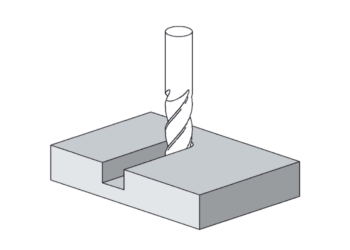360-degree feedback is an invaluable tool that provides individuals with a well-rounded view of their performance, helping them understand strengths and areas for improvement. Unlike traditional feedback methods that often come from a single source (like a supervisor), 360-degree feedback gathers insights from various perspectives, including peers, subordinates, managers, and even self-assessments. This method offers a comprehensive evaluation, providing a holistic view of a person’s skills, behaviors, and work habits.
What is 360-Degree Feedback?
360-degree feedback is a performance appraisal system that involves collecting feedback from multiple sources to assess an individual’s performance. This method includes input from colleagues, team members, supervisors, and sometimes customers or external stakeholders. It also involves a self-assessment, which helps the individual reflect on their strengths and areas for development. By gathering diverse perspectives, 360-degree feedback enables a more accurate and unbiased assessment of an individual’s capabilities.
In a typical 360-degree feedback process, participants are asked to rate specific competencies, behaviors, and performance metrics. The feedback is then compiled into a report, which is shared with the individual being assessed. The report is often broken down into categories such as leadership, communication, teamwork, decision-making, and problem-solving, helping the individual see where they excel and where they need improvement.
Why is 360-Degree Feedback Important?
One of the biggest advantages of 360-degree feedback is its ability to provide a complete picture of an individual’s performance. Traditional feedback systems, such as performance reviews from managers, tend to provide a limited perspective, often based on the manager’s personal views. While valuable, this can be subjective and not always reflective of the individual’s full range of skills.
360-degree feedback overcomes this limitation by incorporating multiple viewpoints. It encourages a more balanced, objective assessment and promotes personal development by providing individuals with a clearer understanding of their strengths and weaknesses. This can be particularly helpful for employees who may not receive frequent or detailed feedback from their managers.
Another key benefit of 360-degree feedback is its ability to enhance leadership development. Managers and leaders can gain insights into how their actions and decisions are perceived by others, which can lead to improved communication, collaboration, and decision-making. For example, if a leader consistently receives feedback about a lack of clarity in communication, they can work on improving this skill, benefiting both their team and their organization.
The Benefits of 360-Degree Feedback
- Improved Self-Awareness: One of the most significant benefits of 360-degree feedback is its ability to improve self-awareness. It helps individuals gain a clearer understanding of how their behavior impacts others, both positively and negatively. With this insight, they can make informed decisions about how to improve their performance and relationships at work.
- Enhanced Team Performance: When team members receive feedback from one another, they become more aware of how their actions affect the group as a whole. This can lead to better collaboration and communication, ultimately improving the team’s overall performance. Furthermore, 360-degree feedback can identify areas where teams are working well together or areas where conflict might arise, allowing for timely interventions.
- Targeted Development: 360-degree feedback provides individuals with concrete examples of their strengths and areas for improvement. This information can guide targeted development plans, such as leadership training or communication skills workshops. By focusing on specific areas, individuals can make measurable progress in their professional growth.
- Building Trust and Transparency: By promoting openness and accountability, 360-degree feedback can build trust within an organization. When employees feel that they are being given honest and constructive feedback, they are more likely to engage in the process and work toward continuous improvement. Additionally, when the feedback process is transparent and fair, it fosters a culture of mutual respect and support.
How to Implement 360-Degree Feedback
Implementing a 360-degree feedback process requires careful planning and execution to ensure its success. Here are some steps to consider:
- Identify the Purpose: Before implementing 360-degree feedback, it’s important to define the purpose of the feedback. Whether it’s for leadership development, performance evaluations, or team-building, having a clear goal will help guide the process.
- Choose the Right Participants: Ensure that the participants selected for feedback are relevant and representative of the individual’s work environment. This might include peers, direct reports, supervisors, and customers. The more diverse the feedback sources, the more comprehensive the assessment will be.
- Ensure Anonymity: To encourage honest and candid feedback, ensure that the process is anonymous. This helps prevent bias and ensures that individuals feel safe providing feedback without fear of reprisal.
- Provide Training and Support: It’s essential to provide training on how to give and receive feedback constructively. This can ensure that the feedback is actionable and leads to positive change.
- Review and Act on the Feedback: Once feedback is collected, it should be reviewed thoughtfully. The individual being assessed should then work with a coach or mentor to create an action plan based on the feedback received. Regular follow-up and support will help ensure that progress is being made.
Conclusion
360-degree feedback is a powerful tool that can provide valuable insights into an individual’s strengths and areas for growth. By gathering feedback from multiple perspectives, employees can develop a more well-rounded understanding of their performance, leading to improved self-awareness, enhanced team collaboration, and targeted personal development. When implemented thoughtfully, 360-degree feedback can foster a culture of continuous improvement, helping individuals and organizations reach their full potential.To learn more about 360-degree feedback and how it can benefit you or your organization, check out this detailed 360 feedback guide.











































































